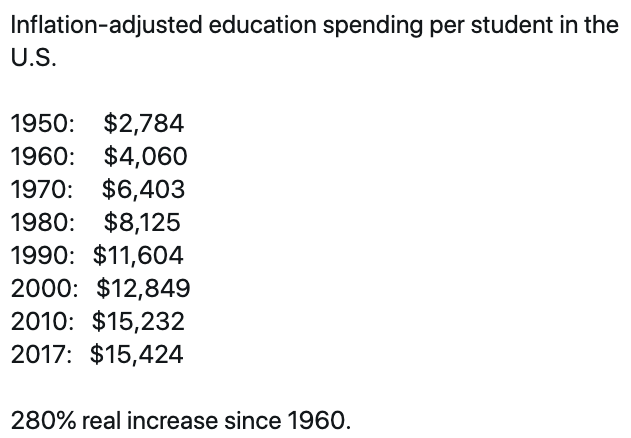“The federal government must make massive federal appropriations earmarked for public schools.”
That’s an excerpt from the National Education Association’s report: “All Hands on Deck: Initial Guidance Regarding Reopening School Buildings.” When people complain that the teachers unions don’t have a plan for reopening schools other than “give us more money,” this is the document the NEA points to.
Its message: Give us more money — and not just for the classroom.
“For schools to be successful, policymakers must invest not only in education but also in addressing issues surrounding education: mortgage and rent cancellation for families in economic crisis; school-based community food programs; increased local hiring to provide jobs for unemployed adults; home broadband Internet and computer device access for all individuals,” the NEA proposal reads.
If that sounds like a lot, it’s chump change compared to what the other teachers’ union, the American Federation of Teachers (AFT), is asking for. It’s demanding “an additional $116.5 billion for instructional staff, distance learning, before- and after-school care, transportation, personal protective equipment, cleaning and health supplies, health staffing, custodial and cleaning staff, meeting children’s social and emotional needs and additional academic support for students.”
According to the AFT, taxpayers need to pony up an additional $2,300 per pupil to open schools this fall. In New Hampshire, with about 180,000 K-12 public school kids, that equals $414,000,000 in new spending — on top of the billions being spent already.
As a nation, Americans spend $700 billion a year in K-12 education funds. The CARES Act already adds another $17 billion more.
But teachers unions — who represent teachers, and not children, parents or society as a whole — can do the math. Parents are desperate to get their kids back in school. Working-class parents who have jobs and few childcare options are even more desperate.
In New Hampshire, a majority of parents tell the University of New Hampshire Survey Center they are ready for their kids to go back to class. And that number is artificially low as a majority of Democrats say they’re not ready. At least part of that reaction is probably based on the view that President Trump is “pro reopen schools” and some Democrats will always say they’re against whatever Trump is for.
Even the affluent suburban parents with white-collar jobs that make working from home easier are probably ready to get the kids out of the house. And they’ll be even more ready by the time Labor Day rolls around.
Meanwhile, the NEA-NH is releasing statements claiming: “Our schools were overcrowded before the pandemic…Our schools were underfunded and under-resourced before the pandemic. When they reopen, these same conditions will still exist.”
“You are either with President Trump and [Education Secretary] Betsy DeVos in their belief that dollars are always more important than children, or with the educators who are standing up for the kids,” according to the NEA-NH.
In fact, New Hampshire’s school problem isn’t overcrowding; it’s schools with declining enrollment that can’t be kept open.
And as far as schools being “underfunded,” New Hampshire schools have never had as much money per pupil as they do today. It’s the most money ever.
As for public school funding nationwide, it’s up in real dollars, too. Here are the actual numbers, courtesy of Corey DeAngelis of the Reason Foundation:

New Hampshire is close to the national average, around $14,500 per pupil depending on the school district.
Last week, the Diocese of Manchester announced that not only are they reopening with full classroom instruction for all of their students, they’re also offering a cash incentive for parents who want their kids back in a schoolhouse and make the switch.
The average Catholic school costs less than the average comparable public school already.
Gov. Chris Sununu says the key to reopening New Hampshire’s schools is “flexibility.”
He’s right. Teachers unions are going to try and find out just how far the taxpayers can bend over.





